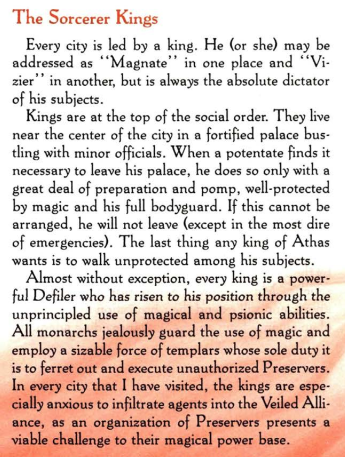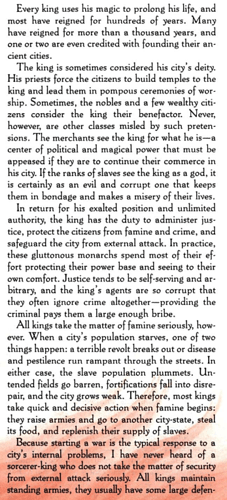Not as written. I gave an example of “political druidism” here, so I might be OK with something like that, but certainly not as written.
Perhaps. But not as some weird pyreen with a halfling obsession, but instead an elder evil with some sinister plan for Athas. What this plan is might be something like Expedition to Castle Ravenloft, where the villain’s motivations are different each play through. Perhaps Rajaat does want to restore Athas, but the restoration is to a pristine state of nature, and sentient creatures have no place.
The Sorcerer Monarch’s are just as the Wanderer described them in the original boxed set.
The Wander implies that anyone with sufficient magical and psionic ability could possibly become a Sorcerer Monarch. The Tyr region is the most intact region left on Athas. Elsewhere in the Tablelands there are other Sorcerer Monarchs, ruling over small towns and cities with as little as 10,000 people, that are dwarfed by the cities of the Tyr region (all of which have well over 100,000 inhabitants, except for Gulg).
There were no cleansing wars, only resource wars, which are ongoing. From time to time, very rarely, a Sorcerer Monarch falls to assassination or mishap. All of the Sorcerer Monarch’s of the Tyr region fear each other, but more than each other, they fear the hungry minor Sorcerer Monarchs of the Tablelands outside the Tyr region, who are always waiting for an opportunity to supplant a Sorcerer Monarch of a rich Tyr region city.
History itself is obscured. Even scholars are confused. Some claim a King’s Age used to be 7 years, or 17 years, but a King’s Age has been 77 years for at least the last 300 years.

